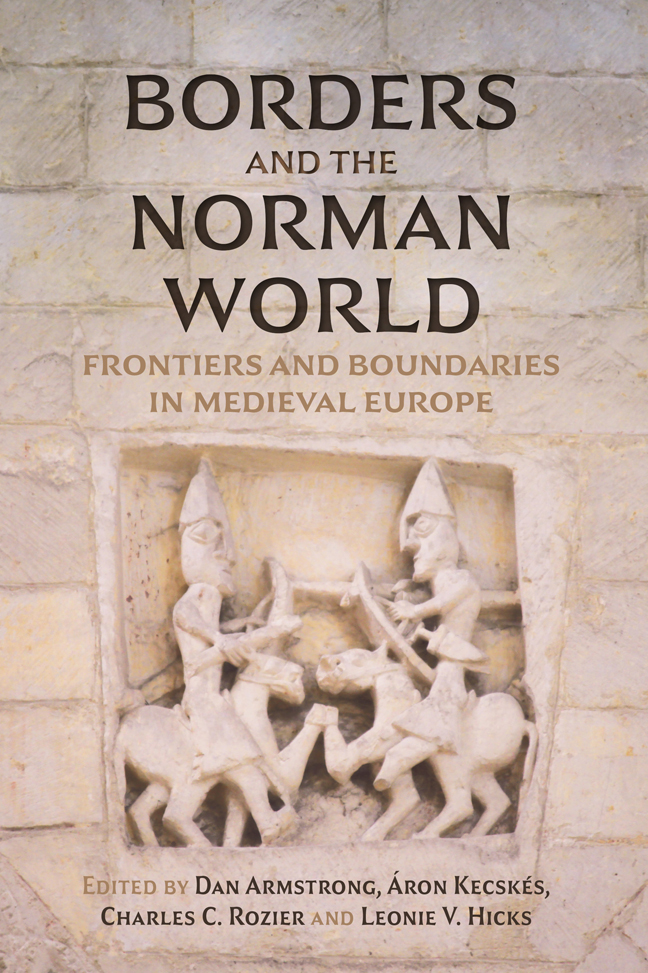Book contents
- Frontmatter
- Contents
- List of Illustrations
- List of Contributors
- Acknowledgements
- List of Abbreviations
- Naming Conventions
- Maps
- Introduction: Writing the Borders of the Norman World
- Part I Borders in and Around the Norman World
- Part II Ecclesiastical Borders
- Part III Conceptual Boundaries
- Afterword: Borders, Landscapes, and Seascapes
- Select Bibliography
- Index
1 - Ireland and the Anglo-Normans Within the Irish Sea World: Rebels, Mercenaries, Allies, 1066–1169
Published online by Cambridge University Press: 22 February 2024
- Frontmatter
- Contents
- List of Illustrations
- List of Contributors
- Acknowledgements
- List of Abbreviations
- Naming Conventions
- Maps
- Introduction: Writing the Borders of the Norman World
- Part I Borders in and Around the Norman World
- Part II Ecclesiastical Borders
- Part III Conceptual Boundaries
- Afterword: Borders, Landscapes, and Seascapes
- Select Bibliography
- Index
Summary
The Anglo-Norman or English invasion of Ireland c. 1169 has been a significant dividing line in Irish history, just as 1066 has been in English history. While such political watersheds serve as convenient tools of periodisation for historians, these historiographical borders can obscure continuities in networks and repeated patterns in interactions. Irish cultural and economic contacts with the Normans pre-dated the military incursions of c. 1169. Norman influences in Ireland, particularly in its Hiberno-Scandinavian trading towns, are in evidence certainly by the start of the twelfth century. This chapter concerns the period from 1066 to 1169, thereby focusing on Ireland and the Anglo-Normans, rather than links to Normandy itself. As well as blurring chronological boundaries, it investigates cross-border political interactions across the Irish Sea, including the involvement of Wales and southwest England in the border area between Ireland and the Anglo-Normans. This highlights that connections with the centre of the Anglo-Norman empire were not always paramount, or that such connections filtered in through the empire's edges.
Before the Norman Conquest of England, the Irish Sea region was already a multilingual, permeable frontier zone, involving Irish, Welsh, Scottish, and English groups. From the ninth century, it also included Scandinavian settlers, whose most significant impact on Ireland was creating its first proper towns: Dublin, Waterford, Wexford, Limerick, and perhaps Cork. By the eleventh and twelfth centuries, these profitable trading hubs were mostly controlled by neighbouring Irish kings – namely, the kings of Leinster and Munster – with a few brief restorations of Hiberno-Scandinavian rulers. There was no one kingdom of Ireland, although such ideas were developing on the eve of the invasion, which resulted in much competition between the numerous dynasties. This chapter contributes to considerations of how the Normans played into transregional maritime networks, by shining a light on the cross-border links and exchange that existed prior to and including the invasion. After the invasion of Ireland, examples of Norman involvement in such networks become clearer: in particular, the landholder John de Courcy conquered Ulster, had links to Cumbria, and married a Manx princess. Such individuals demonstrate that the Normans could also become involved in, or even exploit, such pre-existing networks. The circumstances of the invasion provide an insight into what motivated interactions across the Irish Sea and therefore form this chapter's third and final case study.
- Type
- Chapter
- Information
- Borders and the Norman WorldFrontiers and Boundaries in Medieval Europe, pp. 17 - 42Publisher: Boydell & BrewerPrint publication year: 2023



